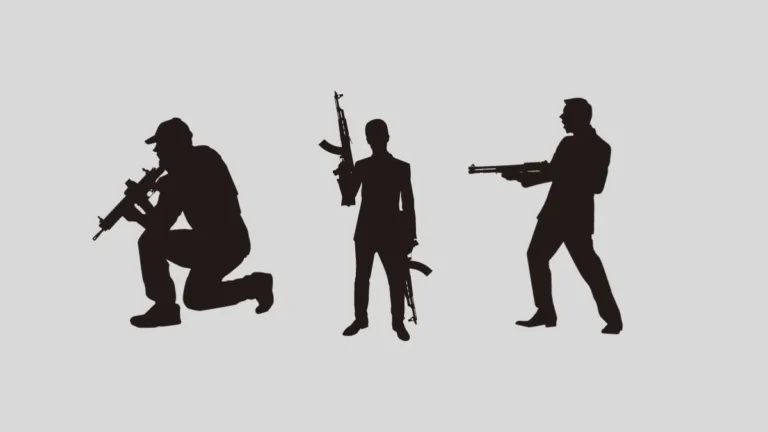Which part of a modern firearm has the same function as the lock on a muzzleloader?
Firearms have been in use for centuries, but the technology behind them has greatly advanced over time. One significant aspect of a firearm is its ability to lock and unlock. This function ensures the safety and usability of the firearm, making it an essential part of any modern firearm.
However, have you ever wondered which part of a modern firearm has the same function as the lock on a muzzleloader? In this article, we will explore the history and evolution of locks on firearms and discuss the similarities between locks on muzzleloaders and modern firearms.
History of Firearms:
The first firearms were developed in the 13th century and used black powder as a propellant. These early firearms had a simple mechanism that required manual loading of gunpowder and projectiles from the muzzle end of the barrel. This led to the name “muzzleloader” for these types of guns.
As technology advanced, so did firearms. With the introduction of breech-loading mechanisms, the muzzleloader was no longer the primary type of firearm. However, it still remained in use for hunting and shooting sports.
Evolution of Locks on Firearms:
The lock on a muzzleloader refers to the mechanism that holds the flint or percussion cap and ignites the gunpowder when triggered. In early firearms, this lock was a simple mechanism that used flint or a percussion cap to create sparks and ignite the gunpowder. This was known as the flintlock or percussion lock.
With advancements in technology, new types of locks were introduced, such as the matchlock and wheel lock. These locks provided better reliability and accuracy, making them popular among armies during wars.
In the 19th century, the invention of the first centerfire cartridge led to the introduction of a new type of lock – the hammerless lock. This lock used a firing pin instead of an exposed hammer, providing better safety and ease of use.
The 20th century saw even more advancements with the introduction of electronic locks, which use electricity to ignite the gunpowder. These locks are commonly used in modern firearms, particularly in military and law enforcement weapons.
Types of Locks on Modern Firearms:
Modern firearms come in various shapes, sizes, and types. Each type has its own locking mechanism that serves the same purpose as the lock on a muzzleloader – to ensure safety and usability. Some common types of locks found on modern firearms are:

Bolt Action Lock:
This type of lock features a bolt that slides back and forth to load the cartridge into the chamber. The bolt is manually operated, making it a reliable and sturdy locking mechanism.
Lever Action Lock:
This lock uses a lever to open the breech and load cartridges. It is commonly found on rifles and shotguns, providing quick reloading capabilities.
Semi-Automatic Lock:
The semi-automatic lock is a popular choice for modern firearms, particularly handguns. It uses the energy from the fired cartridge to extract and eject the spent casing and load a new round into the chamber automatically.
Revolving Cylinder Lock:
As the name suggests, this type of lock features a revolving cylinder that holds multiple cartridges and rotates with every shot. It is commonly used in revolvers.
Gas Operated Lock:
This lock uses the gas from a fired cartridge to operate the mechanism and load new rounds. It is commonly found on automatic and semi-automatic firearms.
Similarities between Locks on Muzzleloaders and Modern Firearms:
Despite the vast differences in technology and design, the locks on muzzleloaders and modern firearms have some similarities. These include:
- Safety: The primary function of both types of locks is to ensure safety when handling a firearm. The lock on a muzzleloader prevents accidental firing by keeping the flint or percussion cap in place until triggered.
Similarly, modern firearms feature various safety mechanisms such as safety switches and trigger locks to prevent accidental discharge.
- Loading and Unloading: Both muzzleloaders and modern firearms require a specific process for loading and unloading. In muzzleloaders, gunpowder, projectiles, and the flint or percussion cap must be loaded separately from the muzzle end of the barrel.
Similarly, modern firearms have a specific loading process that involves inserting cartridges or rounds into the chamber, depending on the type of firearm.
- Trigger Mechanism: The lock on a muzzleloader and modern firearms both use a trigger mechanism to ignite the gunpowder and fire the projectile. In muzzleloaders, this is achieved by pulling a trigger that releases the flint or percussion cap.
Modern firearms also have triggers that release a firing pin or hammer to strike the primer and ignite the gunpowder.
Conclusion:
In conclusion, the lock on a muzzleloader may seem outdated compared to modern firearms. However, it played a significant role in the evolution of firearm technology and remains an essential component in many types of guns.
From flintlocks to electronic locks, the locking mechanism has come a long way, providing better safety and ease of use for firearm owners. Despite the advancements, the primary function of locks on firearms remains the same – to ensure safety and usability.
Next time you handle a modern firearm, take a moment to appreciate the history and evolution of its lock and how it shares similarities with the lock on a muzzleloader. So always be careful when handling firearms because they are not toys, but powerful tools that require responsible use.





